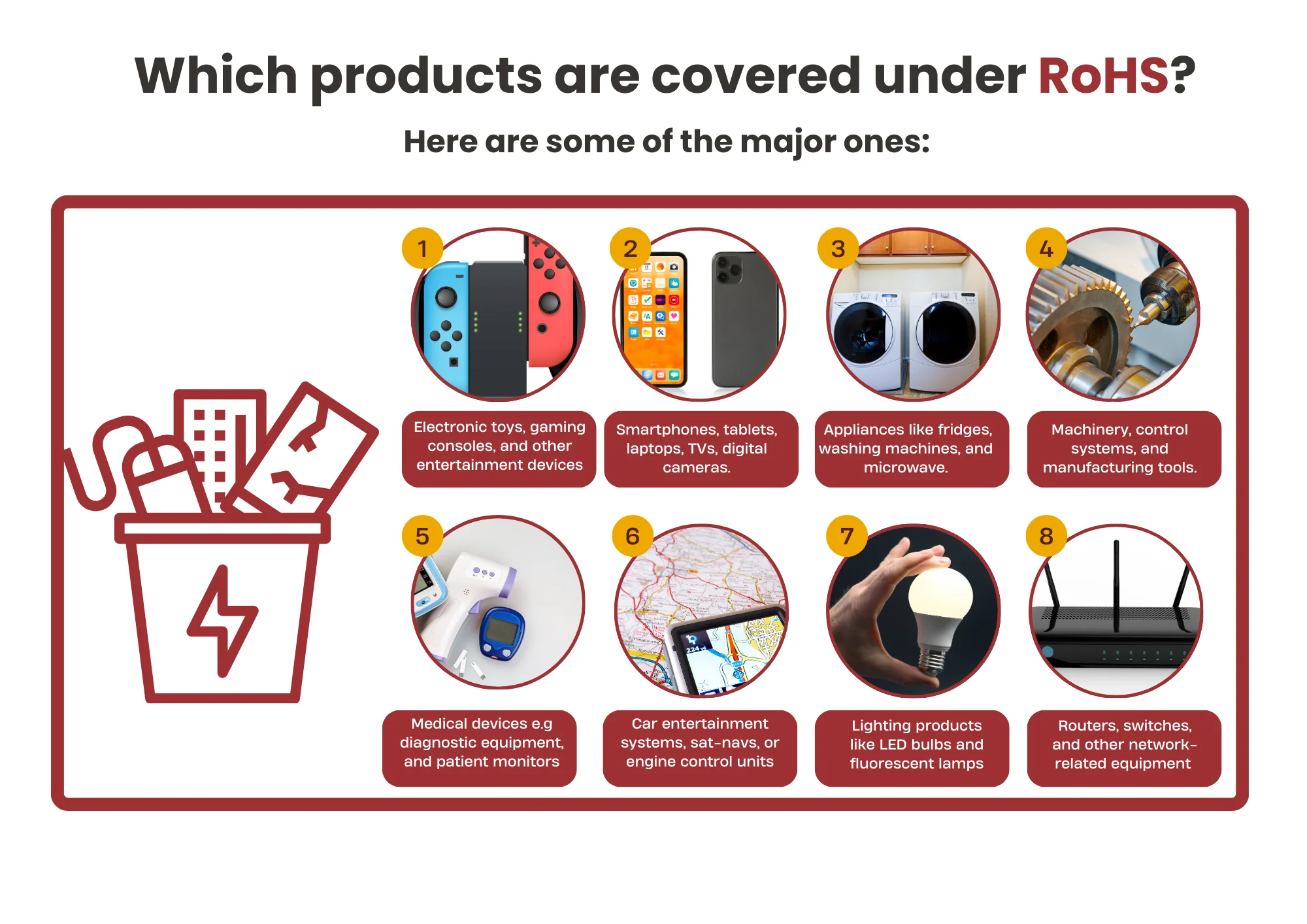
Where to Apply for the EU RoHS Test Report?
The EU RoHS directive applies to a broad range of products, including nearly all electronic, electrical, medical, communication, toy, and security information products. It covers not only finished products but also the components, raw materials, and packaging used in their production, affecting the entire supply chain.

About the EU RoHS Directive
The Directive on the Restriction of the Use of Certain Hazardous Substances in Electrical and Electronic Equipment (RoHS) was first adopted by the EU Council on January 27, 2003, as Directive 2002/95/EC. On JULy 1, 2011, a revised directive—2011/65/EU (RoHS 2.0)—was issued, which took effect on July 21, 2011, replacing the earlier version.
Core Requirements of RoHS 2.0
Article 4(1) of Directive 2011/65/EU requires that Member States ensure electrical and electronic equipment placed on the market, including cables and spare parts used for repair, reuse, upgrades, or functional enhancements, does not contain certain restricted substances listed in Annex II of the directive.
The restricted substances and their limits under RoHS 2.0 are as follows:
- Cadmium (Cd) – limited to 100 ppm. Applicable from July 1, 2006, for categories 1 to 7 and 10; July 22, 2014, for categories 8 and 9; July 22, 2016, for in-vitro diagnostic medical devices; July 22, 2017, for industrial monitoring instruments; and July 22, 2019, for category 11.
- Mercury (Hg) – limited to 1000 ppm.
- Lead (Pb) – limited to 1000 ppm.
- Hexavalent Chromium (Cr VI) – limited to 1000 ppm.
- Polybrominated Biphenyls (PBBs) – limited to 1000 ppm.
- Polybrominated Diphenyl Ethers (PBDEs) – limited to 1000 ppm.
- Di(2-ethylhexyl) phthalate (DEHP) – limited to 1000 ppm. Applicable from July 22, 2019, for categories 1 to 7, 10, and 11; and from July 22, 2021, for categories 8 and 9.
- Benzyl Butyl Phthalate (BBP) – limited to 1000 ppm.
- Dibutyl Phthalate (DBP) – limited to 1000 ppm.
- Diisobutyl Phthalate (DIBP) – limited to 1000 ppm.
The four phthalates (DEHP, BBP, DBP, and DIBP) were officially added to the RoHS 2.0 restricted substances list via amendment (EU) 2015/863 on June 4, 2015.
Products CoveRED by the RoHS Directive
RoHS covers virtually all types of electronic and electrical equipment. The categories include:
1. Large household appliances
2. Small household appliances
3. IT and telecommunications equipment
4. Consumer equipment
5. Lighting equipment
6. Electrical and electronic tools
7. Toys, leisure, and sports equipment
8. Medical devices
9. Monitoring and control instruments
10. Automatic dispensers
11. Other electronic and electrical equipment not covered above
Products Excluded from RoHS
RoHS does not apply to:
- Weapons and military equipment for national defense
- Space equipment
- Products specifically designed for and installed in exempt equipment
- Large-scale industrial tools and fixed installations
- Transport vehicles, excluding uncertified two-wheeled electric vehicles
- Non-road mobile machinery for professional use
- Active implantable medical devices
- Solar panels installed by professionals for long-term public or commercial use
- Research and development equipment for B2B use
Where to Apply for ROHS certification
JJR Laboratory in China offers EU RoHS Compliance testing services and supports clients in obtaining certification.
Email:hello@jjrlab.com
Write your message here and send it to us
 What Are the Testing Items of California Propositi
What Are the Testing Items of California Propositi
 E-Cigarette EU TPD Testing
E-Cigarette EU TPD Testing
 Testing Certification for E-cigarettes Exported to
Testing Certification for E-cigarettes Exported to
 What is Amazon US CPC Certification?
What is Amazon US CPC Certification?
 UK Toy Safety Regulation Standard EN 71-13
UK Toy Safety Regulation Standard EN 71-13
 What is EU UFI Registration?
What is EU UFI Registration?
 EU UFI Registration for E-cigarette E-liquid
EU UFI Registration for E-cigarette E-liquid
 How to get the MSDS Report for Electronic Cigarett
How to get the MSDS Report for Electronic Cigarett
Leave us a message
24-hour online customer service at any time to respond, so that you worry!




